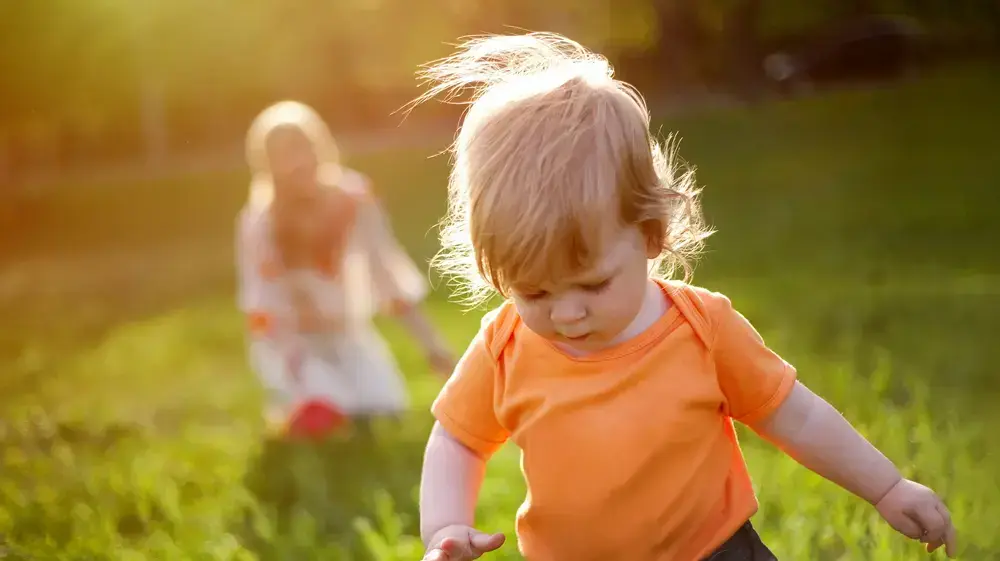The child "does rather"?
This is what you need to do
It may drive you crazy, but this parenting tip can give you a different perspective on things that will make your response change from end to end.
Daniel Sarantsky, in collaboration with JAMA
01/01/2022
Saturday, 01 January 2022, 23:25 Updated: 23:29
Share on Facebook
Share on WhatsApp
Share on Twitter
Share on Email
Share on general
Comments
Comments
How many times have you said to your child, "Enough, stop," but he looked at you and kept doing the exact same thing? He climbs on the high table, looks at you and waits for your response that is not long in coming ("Spinach, it's dangerous"), but has a smile on his face even though he no doubt hears and understands you. Why does he "actually do" and continue to do so?
Dana Hovesh, a certified parent counselor at the Adler Institute and the Ministry of Education, clarifies things: From the age of about a year and a half, a wonderful thing happens. The little ones are beginning to discover independence, they have the ability to grasp, attract, activate, climb and touch everything that is allowed and also what is forbidden. The different experiences contribute to the development of their cognitive and motor ability, with each success helping the sense of ability and making them perform the same action again.
During the various experiences, they examine the reactions of the environment (just as your child looks at you when he does something) and thus learn the boundaries of the home. Therefore, already at this stage,Your reactions greatly influence the shaping of the child's personality.
For the JAMA app
More on Walla!
Is the babysitter coming or starting a new class?
This is how we prepare the child for changes
In collaboration with JAMA
This happens just as they begin to discover independence.
Toddler playing in the grass (Photo: ShutterStock)
To understand children's behaviors we will find out what the purpose for which they are acting, instead of trying and understanding what the reason is. So, instead of asking "why?" Change the question and use "for what?" For example: Why does he not stop climbing the table? What is his purpose in this? Now try to answer the question for yourself and you will better understand where the child's behavior is coming from.
He experimented and climbed on the table. He is tall and happy that he has succeeded. Now he is also trying to stand on the table. You will in response say: "Do not stand on the table", explain that it is dangerous, keep saying "But I said it is forbidden", "Stop". Thanks to the many responses the child has received (you have provided him with an audience for the show he is currently presenting on the table), he will continue to wait for a similar response. If he again gets a similar response of a lot of attention around the event, his behavior will be fixed and he will continue.
Ask again - for what?
For then receive special reference.
You are currently only interested in and dealing with it.
For the child no matter if it is a positive or negative attitude, for him he has received too much attention.
From this it can be understood that a child does not "do exactly that".
He does not act against you and does not climb on the table to drive you crazy.
He works for himself - to then get over-referenced.
They constantly examine the reaction of the environment to their actions.
A girl standing on the windowsill (Photo: ShutterStock)
And now that you understand, how to respond?
Behave in a matter-of-fact, consistent and clear manner. The boy came up to the table? Since safety comes first, take it off immediately. They once said - "It is forbidden to climb on the table" and give an option for what he is allowed to do: "You can climb on the stool". Each time he goes up, take him down without speaking. The border should be clear and consistent - do not get on the table. Is he crying (sad / angry / frustrated)? Contain the crying, give him a feeling that you understand him - "I understand it's fun to climb on the table, but I'm worried, it's dangerous", and referred him for donation and helpfulness - "Would you like to help me wash an apple?". When he realizes that there is no special interest around the table, he will stop messing with it and move on to the next experiment.
The Jama app was established with the aim of addressing mothers of babies from birth to age three, and centralizing for them content, activities, tips from experts and videos that will accompany them throughout this challenging period.
All the content in the app "grows" together with the baby and is precisely adapted to its developmental stages, so that the mothers receive only what is relevant to them and interests them at any given moment.
The Jama app is the place for mothers in Israel to meet and get to know other mothers around them, and create new and exciting friendships in the fascinating journey.
Search us on Google: https://app.jama.co.il/
health
New parents
Tags
parenthood
parents
motherhood
Parental guidance
Toddlers


/cloudfront-eu-central-1.images.arcpublishing.com/prisa/7QU636FY4BGCHIYJHGSNPBQJWI.jpg)




